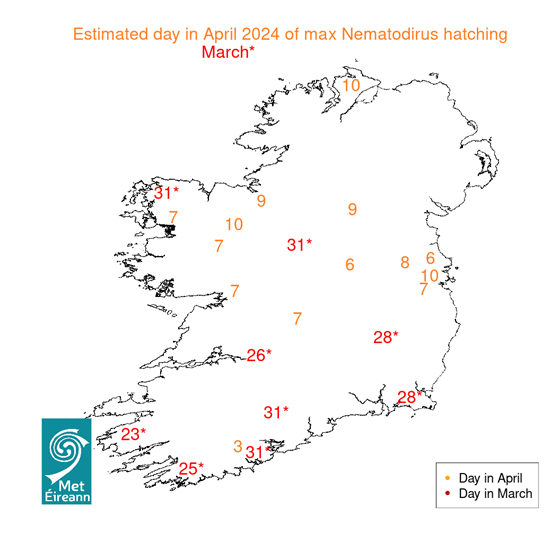Taken from the Department of Agriculture, Food and the Marine (DAFM) Press Release on gov.ie.
Introduction
Each spring, the Department of Agriculture, Food and the Marine (DAFM), in collaboration with Met Éireann, UCD and Teagasc advises farmers of the predicted risk of disease, chiefly in lambs, caused by the roundworm Nematodirus battus.
The disease
Nematodirosis is a severe parasitic disease of lambs six to twelve weeks of age which become infected by ingesting large numbers of infective larvae from grazing on contaminated pasture. The life cycle of N. battus is unlike that of other roundworms in that eggs deposited on pasture do not hatch until the following year to release the infective larvae. This happens during a mass hatching event in spring when soil temperatures increase after a period of cold weather. Disease typically occurs in April, May and June.
After ingestion by lambs, Nematodirus larvae invade the wall of the intestine. Disease is characterised by profuse diarrhoea, dehydration and weight loss. Calves may also be similarly affected. In outbreak scenarios, lambs can be seen congregating around water troughs due to the severe thirst that develops. Adult sheep are unaffected by the parasite.

Estimated day in April 2024 of max Nematodirus hatching
Further details on the Nematodirus Forecast for 2024 can be found on gov.ie.